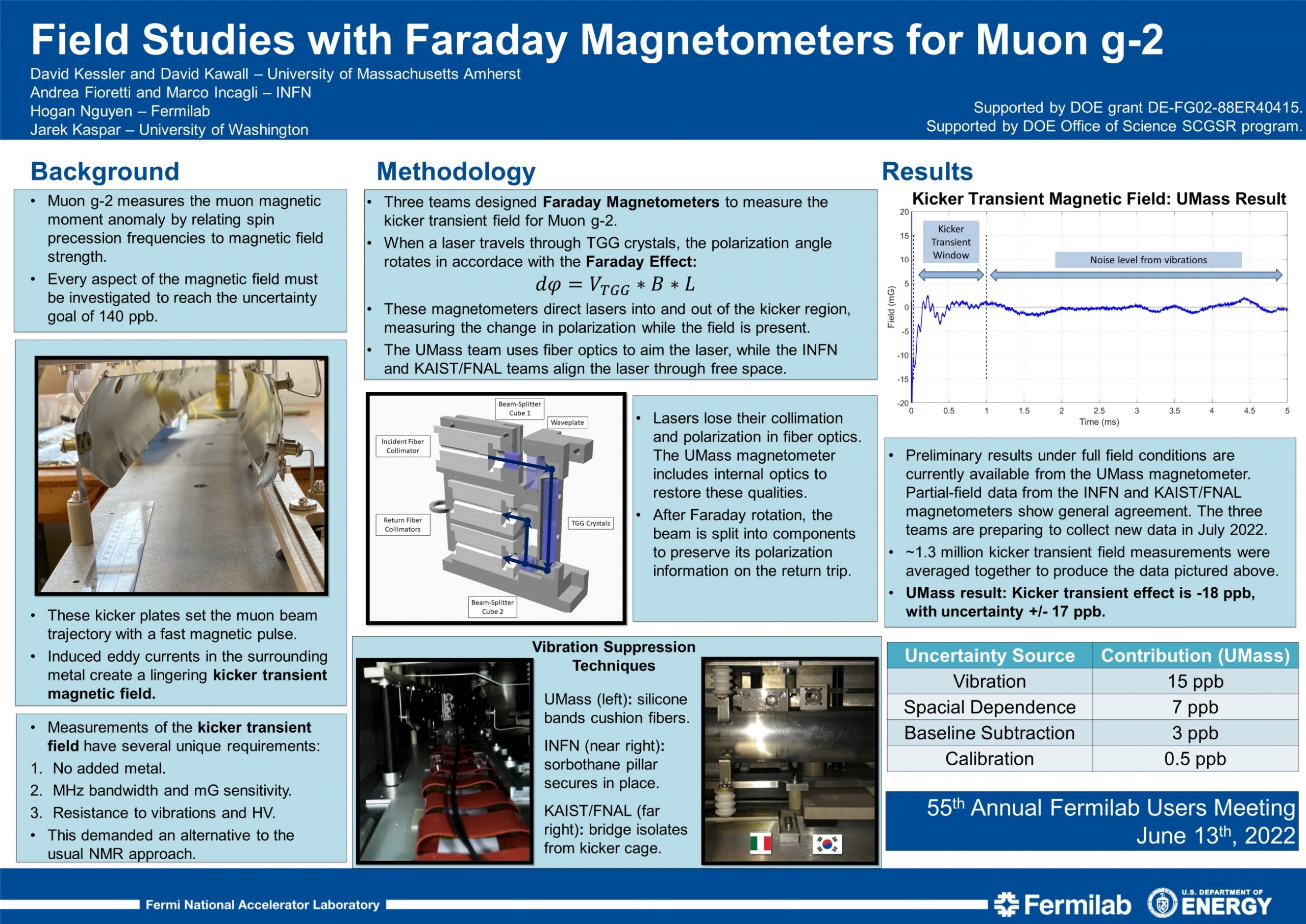Zoom Presentation Registration: https://fnal.zoom.us/j/99853283004?pwd=czF4am5CRzJHeW1MTGxJcE5CTXh5Zz09
The Muon g-2 experiment measures the muon magnetic moment anomaly a_mu, investigating a possible discrepancy with its Standard Model predicted value. The search for a_mu is dependent on precisely measuring muon precession frequencies as they orbit inside a magnetic storage ring and relating them to the strength of the ring’s magnetic field. One significant source of uncertainty in this measurement comes from the kicker transient magnetic field: a perturbation created by eddy currents induced in all nearby metal whenever the primary kicker field turns on and off. To measure the kicker transient field without altering its strength, three teams built new Faraday magnetometers that function without adding any metal into the system. These magnetometers send laser light through TGG crystals, where the polarization of light rotates proportionally to the strength of the surrounding magnetic field. This technique allowed us to reach milligauss-level sensitivity with megahertz-level bandwidth, and several successful measurements have been performed by each team. We present results from the UMass team’s Fiber Optic Faraday Magnetometer, with an analysis of the kicker transient field and its newly reduced contribution to g-2’s overall uncertainty.
Return to Main Poster Presentation
To enlarge the poster, double-click on the image.

